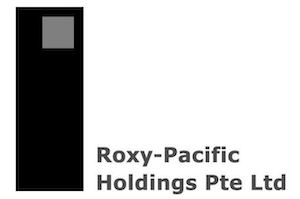Sabana leads smaller Reits in looking for an exit when unit prices are low
Internalisation
Internalising a Reit’s management is beneficial. The unitholders might enjoy cost savings. Perhaps there is a better alignment in interest between management, and unitholders. Many of the investors that handled investor relations for Hong Kong’s Link Reit as part of its management told me they liked the trust’s management model.
Singapore’s bourse will gain if investors are given a wide range of Reits (both externally and in-house managed) to choose from. Could regulators make it easier for Reits to internalise the management of their externally-managed Reits? Sabana Reit will save money if they become internally managed. Those savings could be reflected in higher DPUs and prices.
Buying out
JTC data show that in 2023, the prices and rents of industrial spaces will have risen by yoy 8.9% and 5.1 percent respectively.
Sabana Reit’s real estate portfolio could be attractive to buyers given the positive prospects and demand for industrial properties.
Sabana Reit units will be rewarded if a trust merger with Clar or MIT/MLT or a sale of its assets can bring a value of the trust around its NAV.
It is also worth considering other property-related funds that own Singapore assets in segments which have good prospects.
Far East Hospitality Trust, Q5T0% (FEHT), had total assets worth S$2.6b at the end-2023. Its NAV for end-2023 is 33 percent lower per stapled bond as of Mar 18th.
FEHT manages a wide range of serviced residences and hotels in Singapore. For H2 20,23, the trust’s hotels reported a revenue increase of 19.9% yoy per available room while its serviced homes posted a revenue increase of 10.7% yoy per unit.
Singapore’s Reit sector grew rapidly after the first Reit was listed on the Singapore Stock Exchange in 2002. Low interest rates contributed to the rapid growth in Reits.
Reits, which are yield-enhancing investments, could make acquisitions using debt funding when interest rates were lower. Investors were also hungry for such instruments as Reits.
straits at joo chiat ebrochure
Interest rates could rise further due to inflation and the current high interest rates.
Reits find it difficult to keep up with rising borrowing costs. Reits’ unit prices are lowered by higher discount rates applied by investors when valuing Reits.
In the light of these facts, it is important that many Reits or property-linked business Trusts seriously consider their options.
Sabana Reit will be able to lead if they abandon their internalisation of management journey and work on a exit.
Many unitholders, who voted in favor of removing Sabana Real Estate Investment Management SREIM as the trust’s manager to begin the process of internallyising the Reit’s manager by August 7, 2023.
Internalising management by which the Reit’s trustee owns the Manager instead of outsourcing to an external party seems to be messy, costly and difficult.
Sabana Reit’s gross revenue and net real estate income increased year-over-year (yoy), for the second half of 2023. Board of Directors of the trust’s Manager declared a Distribution per Unit (DPU), which fell by 21 % yoy, for the H2 2023.
The DPU was largely affected by the 10% retention of distributable earnings to cover costs incurred, or that will be incurred, in connection with internalisation. In the future, it may be necessary to retain more distributable revenue.
The Reit’s Manager also faces difficulties in attracting, and retaining, talent as a result of internalisation.
Lacking Scale
Sabana Reit may be limited by its size whether managed internally or from the outside.
Sabana Reit, which owns industrial property in Singapore, has four major categories. They are high-tech industries, chemical warehouses, warehouses, and logistics and general industrial.
Sabana Reit, as at end-2023 held total assets worth S$1billion. This is a far cry from trusts such as CapitaLand Ascendas Reit, A17U 0% MIT or Mapletree Industrial Trust, ME8U +1.3% MLT that have assets of S$18.3bn.
Clarify, MIT & MLT make up the benchmark Straits Times Index. Sabana Reit, however, does not.
Institutional investors are more likely to be interested in large trusts, as they may offer better trading liquidity. Some larger funds may also benefit from cheaper financing or better access.
Sabana Reit sold at a discount by 30 percent to the net asset value per unit (NAV) of S$0.52 at its end-of-2023. Clar, MIT & MLT all traded at a premium to NAV end-2023 per unit by 18%, 23% & 2% respectively.
